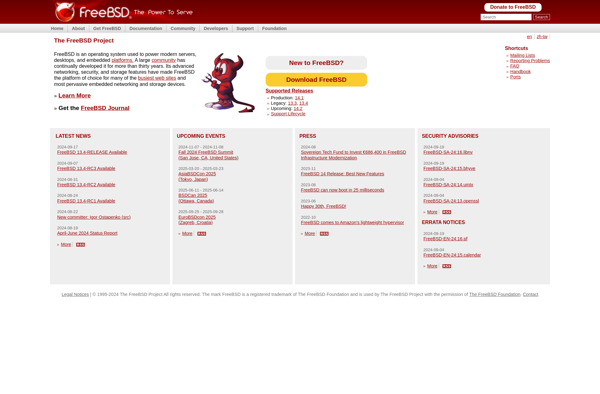NetBSD

NetBSD: Free and Open-Source Unix-like Operating System
A free and open-source Unix-like operating system based on the Berkeley Software Distribution (BSD), supporting various hardware platforms with a focus on portability, standardization, correctness, proactive security and integrated cryptography.
What is NetBSD?
NetBSD is a free and open-source Unix-like operating system based on the Berkeley Software Distribution (BSD). It was the second open-source BSD descendant to be formally released, after 386BSD, and continues to be actively developed. The NetBSD project focuses on code clarity, modularity, and portability.
Some key features and characteristics of NetBSD include:
- Supports a variety of hardware platforms including 32-bit and 64-bit x86, ARM, PowerPC, SPARC, and more.
- Focuses on portability across multiple hardware platforms.
- Follows POSIX and SUS standards for a UNIX-compatible operating system.
- Includes integrated cryptography and security features.
- Offers a full-featured X Window desktop environment.
- Includes complete source code and permissive licensing terms.
- Backed by an active open source community contributing new features and fixes.
NetBSD can be a great fit for systems where hardware portability, standards compliance, security, and open source development are key priorities. Its portable code base makes it well-suited for embedded systems. The project also focuses on correctness and proactive security efforts like fuzz testing and memory protection.
NetBSD Features
Features
- Portable - runs on many hardware platforms
- Focuses on correctness, standardization and proactive security
- Supports cryptographic hardware acceleration
- Supports SMP and many ARM platforms
- Includes advanced networking and firewall capabilities
Pricing
- Open Source
Pros
Cons
Official Links
Reviews & Ratings
Login to ReviewThe Best NetBSD Alternatives
Top Os & Utilities and Unix-Like Operating Systems and other similar apps like NetBSD
Here are some alternatives to NetBSD:
Suggest an alternative ❐FreeBSD

GhostBSD

NomadBSD

MINIX 3

BlackBerry QNX

OpenBSD

CRUX Linux

DragonFly BSD

MidnightBSD

HardenedBSD

NeXTSTEP
